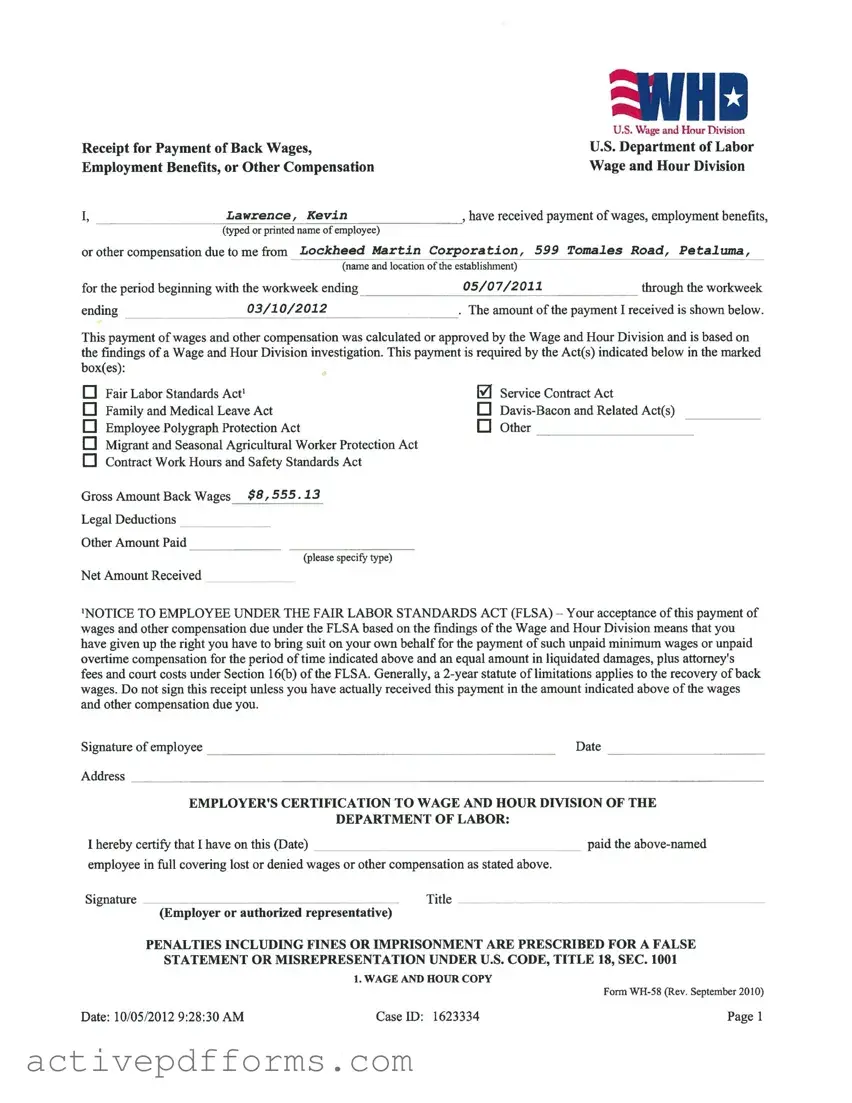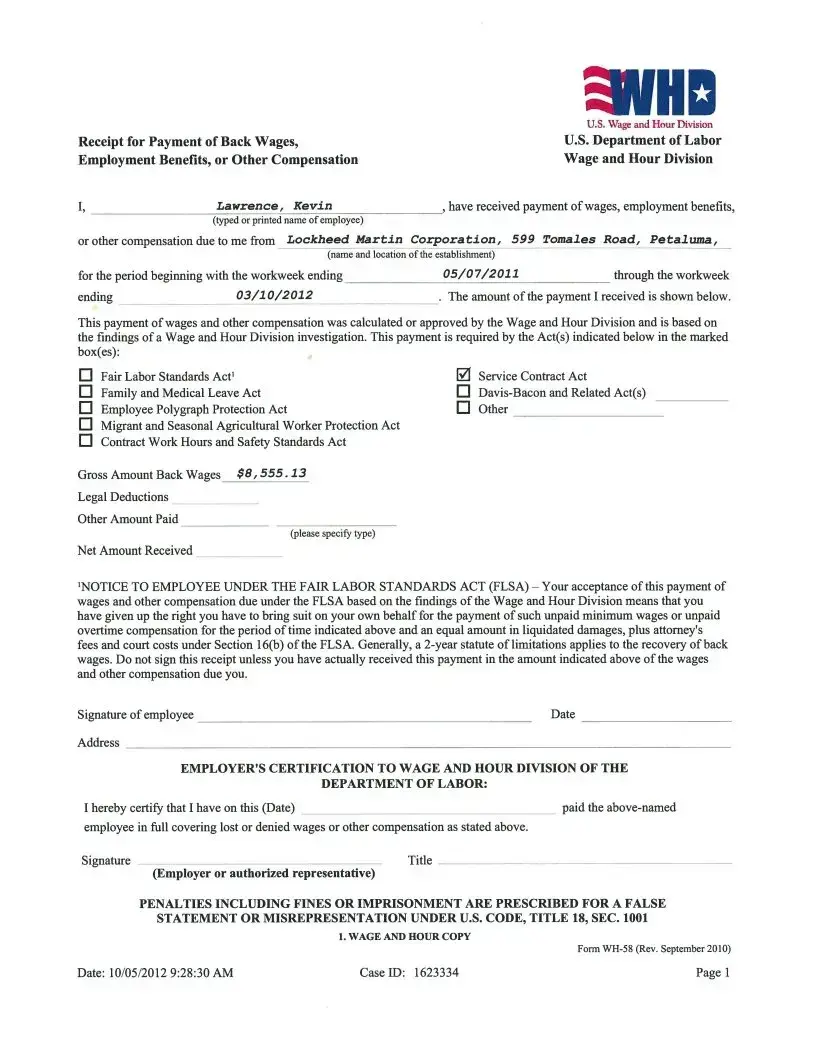The Form WH-58, as a crucial document emanating from the U.S. Wage and Hour Division of the Department of Labor, serves as a formal acknowledgment receipt for the payment of back wages, employment benefits, or other compensations due to employees. This specific form plays a pivotal role in the resolution of disputes concerning unpaid wages and is the result of investigations conducted by the Wage and Hour Division. By signing this form, an employee, such as Kevin Lawrence in the provided example, confirms receipt of a specified amount from an employer, in this case, Lockheed Martin Corporation, for a defined period. The form meticulously details the gross amount of back wages, legal deductions, and the net amount paid, ensuring transparency and accountability for both parties involved. Importantly, the form also serves a legal function, indicating a relinquishment of the employee's right to sue for the specified payment, under certain labor laws like the Fair Labor Standards Act, among others listed. Equally, it requires an employer's certification, underscoring the legal obligations and potential penalties for false statements. This documentation, thus, underscores a comprehensive remedy process for wage recovery, while simultaneously providing a safeguard against future misunderstandings or disputes regarding compensation.

